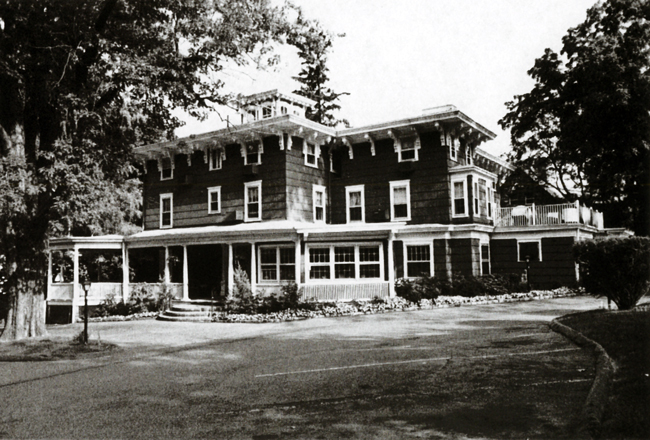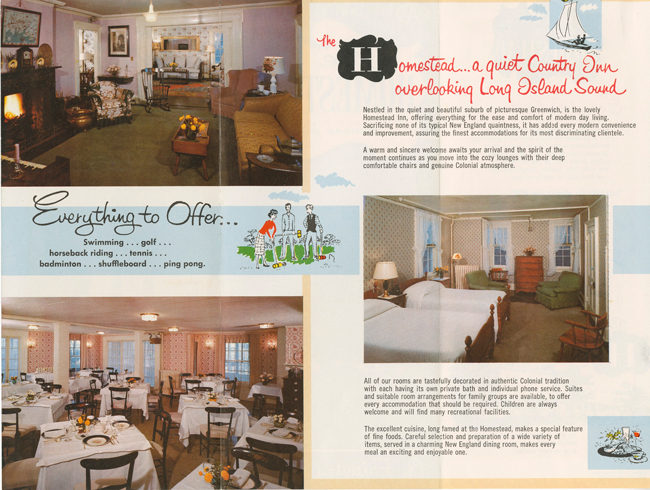
As far back as 1799, Abraham Mead built a farmhouse on eight acres on Field Point Road in Greenwich for his wife, Keziah Howe and his three children, Deborah, Zophar and Isaac on land that had been used as a horse pasture, first by the native Indian tribes and later by the colonists.
Abraham was the youngest son and eleventh child of Ebenezer and Hannah Brown Mead, out of a total of twelve. The Mead family, originally from England, had been living in Greenwich since the mid-17th century.
Abraham Mead was known as “Deacon Potter,” since he was both a deacon of the Second Congregational Church and the owner of a successful pottery. At first apprenticed to Dutch potter, Adam Staats, whose business was located at the head of what is now Indian Harbor, the talented Mead ultimately took over the pottery after the American Revolution. During the war, he had served as a captain in command of the Middle Company or trainband, a militia unit.
Mead shipped his pottery far along the coast in his own barges and became master to several stoneware potters in Connecticut, including his mentor’s son, Adam, who later worked in Stonington.
The devout deacon paid off the debt of the church on Meeting House Hill with income from his pottery and then served as town treasurer for a decade, beginning in 1787.
Crowning a circular summer house on the front lawn of the Mead property in what was then known as Horse Neck Field Point, stood a womanly ship’s figurehead with rosy cheeks and black eyes, gowned in flowing white robes over a hoop skirt. Originally the figurehead fronted the clipper ship, the Lady Lancashire, commanded by William L. Lyon, and now she resides in a New York City museum.
After Mead’s death, in 1828, the house was deeded to his two sons, Isaac and Zophar, and later to Isaac’s only child, Augustus, the first chief of probate in Greenwich. The property remained in the Mead family until 1923, when Nelson Mead sold it to Alfred and Elsie Lovejoy.
The house is topped by a decorative Italianate cupola with arched, segmented windows. The third floor just below has two-over-two windows and a bracketed cornice. The lower floors feature six-over-six windows of earlier 19th century origin. On the first level is a wrap-around porch, with Colonial Revival detailing, most probably built in the early 20th century.
Inside, are ornate plaster ceiling moldings in both the bar and the sitting room, with its Greek Revival mantel, and the fireplace in the dining room is of brick and mortar. A variety of late 18th and 19th century doors have been carefully preserved, along with baseboards, chair rails and additional wood trim.
One bedroom, known as the “Bride’s Room,” has what is believed to be an original fireplace mantel with flanking doors and paneling. In another bedroom is the rare early bird stenciling of the “Robins Room.”
The Lovejos moved the building to the top of a nearby hill and remodeled the house as an inn, as it remains today.
A succession of innkeepers took over “The Homestead,” adding more rooms, a widow’s walk and oodles of Victorian trimmings. Then, for two years at the turn of the 20th century, teachers, Mary Gibson and Harriet Stowe, owners of the Rye Female Seminary, later Rye Country Day School, ran the inn as Homestead Hal, a. school exclusively for girls.
During the 1920s, a three-bedroom cottage and a guest house were installed, and, in 1950, the inn was purchased, through a foreclosure, by Mr. and Mrs. Philip Waldron, who had been running the Stanton House in Greenwich for two years, paying about $28,000. A boiler-room explosion shocked the hotel in 1952, resulting in the flight of 25 guests and $1,000 worth of damage. But life at the inn continued, and in 1954 a liquor license was obtained and soon a 20 x 50-foot pool appeared.

In the 1960s, Mr. and Mrs. George J .Stephen bought the inn, along with their son, Walter, a graduate of the Cornell University School of Hotel Management. The inn was resold in 1978 to L. and N. Partnership, Lessie Davison and Nancy Smith and their husbands, Charles H. Davison of Peat, Marwick, Mitchell & Co. and Dr. James W. Smith, a famed New York City plastic surgeon and noted collector of antique penny-arcade games.
The inn was in dire shape when Nancy Smith and Lessie Davison took over, and they brought in noted designer, John Saladino, to help with restoring and revamping the inn. Hand hewn and pegged chestnut beams were uncovered, a bricked-up fireplace was revealed, and a few antiques discovered, among them several sleigh beds.. One bedroom proved to have walls stenciled with robins perched on flowering branches dating to 1860 that had been hidden beneath multiple layers of wallpaper.
After a very successful 20-year run, the inn was sold to Thomas and Theresa Henkelmann and, under their inspiration, has since become a member of the prestigious Relais & Chateaux. Henkelmann had been a four-star chef at Le Parker Meridien in Manhattan and later at La Panetiere in Rye.

